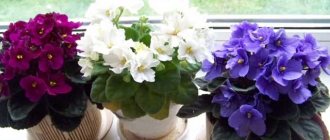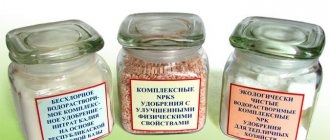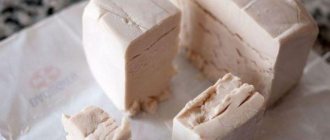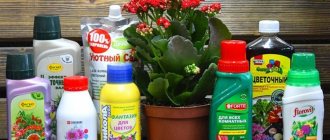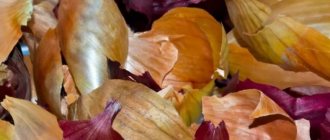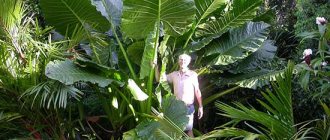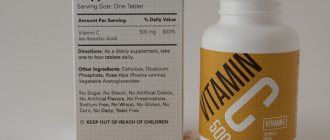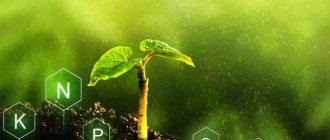Types of fertilizers
To feed anthurium, you can use organic, mineral and complex fertilizers, which contain organic and mineral fertilizers in an ideal ratio. But the fertilizer can be prepared at home using organic residues:
- Onion peel, which is used in the form of a decoction of 50 grams of peel and 2 glasses of hot water. This decoction is poured over the anthurium.
- Banana peel. It is filled with water, left for several days, and then the plants are watered.
- Wood ash. A solution of 1 tbsp. ash and one liter of water are watered at the roots of the plants twice a month.
Of the organic fertilizers that have proven themselves well:
- Mullein in the proportion of 1 tablespoon per 1 liter of water is used for irrigation throughout the year.
- Humus is used when replanting a plant, mixing it with the substrate 1:3.
- Bird droppings are used in dissolved form (1 tsp per 1 liter of water), as they are rich in chemical elements in an accessible form and help accumulate nitrogen.
For abundant flowering
- "Kemira Lux". Mineral complex for year-round use. One tablespoon of Kemira is dissolved in 10 liters of water and is used in the summer with every watering, in the winter every third or fourth time.
- "FORTE" for indoor plants. For watering, 1/4 of a cap of the drug is diluted in 1.5 liters of water. For spraying, 1/8 of a capful of solution is diluted in 1.5 liters of water. Apply from March to October once a week, in winter - once a month.
- "Agricola for flowering plants." Dissolve 1 tsp in three liters of water. agricola, water around the root or spray over the green mass.
For fast growth
- Growth regulator "Yantarin, vrk". The required amount of the drug is diluted in 1 liter of water, according to the attached instructions. The solution is watered or sprayed on the plants at intervals of twenty days. Increases plant resistance to diseases and pests, and also promotes growth.
- "Micromix". The drug contains all the micro and macroelements necessary for the development of anthurium. Based on it, a solution consisting of 10 grams is prepared. drug, 0.5 liters of water and 10-15 Urea granules. Spray per leaf, 50 ml. solution per 0.5 liter of water, 1-2 times a week. For root feeding 100ml. solution per 0.5 liters of water, watered once a month.
Plants are replanted once every 2 years.
To keep the leaves large
"FORTE" gloss for leaves.
Protects the leaf plate from pests, and also ensures the shine of the leaf plate due to the presence of silicone in the composition. The drug is in the form of a spray, which is sprayed onto the leaves after wiping them from dust. Sick plants should not be fed until they recover. If there are pests, you first need to get rid of them, and then apply fertilizer. Transplanted plants can be fertilized no earlier than two weeks after transplantation.
When does a plant need feeding?
Anthurium is fed from March to September once every 2 weeks. In this case, fertilizers are applied directly to the roots.
Important! In winter, the frequency of fertilizing is reduced to 1 time per month.
Young specimens under two years of age are fed regardless of the season. In the first 6 months from the moment of planting, fertilizers are applied once every 10 days.
Purchasing drugs
When purchasing, you need to pay attention to the intended purpose and in what form the fertilizer is in. Fertilizer in granules has a longer validity period; in liquid form it is quickly absorbed, but acts for a short time. Here are the most popular drugs:
- “Azalea” (price from 123 rubles in Moscow), “Yantarine” (price 78 rubles);
- “FORTE” for indoor plants (price 100 rubles);
- “Kemira” (79 rubles per 1 kg), leaf spray “FORTE” in Moscow costs 260 rubles;
- “Agricola for indoor plants” (20 rubles).
Nutritional requirements
Anthuriums tolerate a lack of nutrients more easily than an excess. At the same time, fully providing the plant with the necessary nutrients has a beneficial effect on its decorative effect, flowering duration, and resistance to diseases and pests. When purchasing ready-made complex formulations for indoor plants at a garden store, you need to reduce the dosage recommended on the package by 2 times.
At home, anthurium needs to be fed once every 2 weeks in spring and summer, and once a month in autumn and winter. An excess of nutritional components should not be allowed, as this will negatively affect the condition of the plant and can lead to death. If this problem is suspected, it is necessary to urgently transplant the overfed specimen into fresh soil substrate, having previously washed the root system.
To avoid the anthurium roots getting burned by the concentrated solution, it is necessary to properly prepare the nutrient mixture, water the bush first with clean water, and only then with fertilizer.
Signs of nutrient deficiency in anthurium:
- nitrogen - the leaves turn yellow and crumble, the stems are thin and hardened, the buds are underdeveloped, the flowers are small and appear rarely;
- phosphorus - the plant slows down or stops growth, the leaf blade curls and acquires a purple tint;
- potassium - brown spots on the leaves, leading to their death, anthurium becomes highly susceptible to fungal infections and pests;
- calcium - the growth of an indoor flower slows down, the leaves become discolored near the petiole;
- iron and copper - young leaves turn pale;
- zinc – light spots, crushing of leaf plates;
- manganese - pale spots.
During active growth
In spring, anthurium begins to grow its above-ground part and prepare for flowering. For the first task, it needs nitrogen, but in small quantities, for the second - phosphorus and potassium. Throughout the entire period of active growth, the plant must receive the necessary microelements from the soil. A lack of nutrients can be determined by a change in the appearance of an indoor flower.
Anthurium is allowed to be fertilized only if it is completely healthy. Infected and pest-affected specimens must first be cured. Always combine the procedure with watering with settled water at room temperature, so as not to damage the root system.
During the flowering period
To set buds, nutrition must be supplied regularly; the supply of phosphorus complexes is of particular importance. During flowering, anthurium can be fed as before, but the concentration of the nutrient mixture should be less so that excess minerals do not lead to the shedding of inflorescences. It is not recommended to completely stop the procedures, since the plant can bloom for a long time, and it requires nutrition to maintain its decorative appearance.
At home, it is allowed to fertilize anthurium with universal mineral complexes by watering at the root.
What to do to make anthurium bloom
Anthurium is an ornamental plant native to America. It is one of the most beautiful representatives of tropical flora. Its flowering is distinguished by bright inflorescences of exotic shape.
Many amateur flower growers complain that, despite its inclinations, anthurium rarely pleases with the riot of colors of its inflorescences. Window sills cannot replace high-altitude tropical forests. However, using a few tricks when cultivating anthurium at home, you can achieve its fantastic flowering throughout the year.
Mistakes gardeners make when growing anthurium
Before looking for the answer to the question of how to make indoor anthurium bloom more often when grown at home, you should objectively evaluate the conditions that were created for its growth.
Anthurium will not bloom if:
- the scorching rays of the sun fall on its stems;
- moderation of watering is not observed - the plant either suffers from excess moisture or does not receive enough of it;
- For planting the plant, waterproof soil is taken - dense;
- the plant is not replanted and fed with nutrients;
- in the room where the houseplant grows, dry air;
- the flower is planted in a large pot (deep and wide in diameter);
- dried inflorescences are not removed in a timely manner;
- the plant is infected with pests.
Any home flower requires attention, and the seemingly unpretentious anthurium is no exception. If mistakes are made in caring for it, then you should not expect the plant to show impressive lush growth and release of inflorescences.
Basic requirements for anthurium flowering
Anthurium blooms differently depending on the variety. For some, the beginning of summer is acceptable, for others, flowering occurs in the fall; even varieties that bloom in winter are cultivated today. Many flower growers also note species of Anthurium that bloom all year round. Therefore, it is never too late to start stimulating the plant to produce inflorescences.
Despite the condition of the anthurium and its age, work begins with correcting the mistakes made, which implies compliance with the basic requirements of the plant.
Lighting
An excellent place for anthurium to grow is partial shade. Pots with this flower should be placed on eastern or western windowsills, which allows the plant to have long daylight hours and diffuse sunlight. In such conditions, anthurium does not waste energy restoring burnt stems and foliage. If we are talking about the winter growing period, then to ensure long daylight hours it is necessary to use fluorescent lamps.
Temperature
Cold and heat are unacceptable for anthurium. The favorable temperature for its cultivation and flowering is considered to be +18..+22°C. This condition must be met both in the cold and warm months of the year.
To reduce the indoor air temperature, air conditioners are used in summer, and heating system temperature regulators are used in winter.
- Anthurium responds with abundant flowering when watered with settled water at room temperature without chlorine impurities.
- The breaks between watering should not exceed four days in the warm season and seven days in autumn and winter.
- The need to water an indoor flower is determined by the degree of dryness of the top layer of planting soil - it should not stick to your hand and should not form cracks.
- To ensure a sufficient level of humidity in the warm season, anthurium foliage should additionally be sprayed with a spray bottle. When performing this procedure, you must ensure that water does not fall on the blossoming inflorescences.
Fertilizer
Anthurium is fastidious in feeding with nutrients, due to which the inflorescences are either absent or weak and few in number. The plant does not tolerate both their deficiency and their excess.
Therefore, you should always be guided by the following scheme:
- Only rooted samples without signs of pest damage need to be fertilized;
- for fertilizing, you should use a complex liquid fertilizer for flowering indoor plants, for example, “Agricola”, “Fertika-Lux”, “Ideal”;
- fertilizers should be applied to the soil no more than once a week during the active growth phase (you need to start at the beginning of March and end at the end of August);
- the recommended one-time dosage of fertilizers should be divided into two or three times;
- Before applying fertilizer, the flower is watered abundantly to prevent burns to the root system.
Proper planting and replanting
Often, growing anthurium at home begins with purchasing a plant at a flower shop. Therefore, after it has finished flowering, it needs to be replanted.
This is done for the purposes of:
- soil renewal;
- providing the root system with optimal conditions for full development;
- achieving more abundant, long-lasting flowering.
In order for the anthurium to quickly grow, it is replanted using the transshipment method, without injuring the root system. The plant is transferred to a larger, shallow pot with an updated slightly acidic substrate consisting of peat, conifer bark, charcoal, sand, expanded clay chips in a ratio of 1/0.5/0.5/1/0.5.
Anthurium also accepts loose forest soils and turf. The lower the density of the soil, the more oxygen enters the roots of the plant, which ensures its vigorous growth and the formation of new inflorescences.
After replacing the purchased flower container, the anthurium is replanted once a year for five years. Subsequently, the number of transplants is reduced to once every three years. A favorable time for transplanting a plant that has been cultivated for several years is the active growth phase from March to September inclusive.
Artificial stimulation of anthurium to flower
If no care mistakes were made when growing a houseplant, but it still does not bloom, you should try artificial flower stimulation. One of the experienced flower growers made a remark that anthurium responds well to watering with moderately hot water.
The method of watering the roots with settled water (+40..+50°C) before the start of the active growth phase (at the end of February) promotes the so-called “shake-up”, which subsequently has a positive effect on the formation of inflorescences.
Another effective method of stimulating flowering is treating anthurium roots during transplantation with special herbal stimulants.
By providing the anthurium with proper care and competent support, you can expect one hundred percent return from it in the form of exquisite budding.
How to feed anthurium
When growing this crop at home, it is necessary to provide the plant with proper care. After transplantation, the first 2-3 months do not require additional fertilizer if a nutrient substrate was used. After this, it is recommended to feed it with weakly concentrated solutions throughout the active growing season.
Fertilizers for flowers are available in several forms:
- liquid;
- pills;
- granules;
- powder;
- compressed cylinders.
Granular preparations are designed for almost the entire season. In the spring, they are scattered over the surface of the soil and mixed with the top layer, embedded shallowly. Dry fertilizers can supply anthurium with nutrients for several months, which must be taken into account when choosing this method of feeding.
Other products are recommended to be used in the form of solutions. Their effect is short-lived, often lasting no more than 2 weeks. For this reason, the procedure with such drugs is carried out regularly. It is important to take into account the dosage recommended on the package; for anthurium it is advisable to reduce it to 2 times.
There are remedies according to folk recipes. Simplicity, efficiency and accessibility are the main advantages of such fertilizers for anthurium at home. The main disadvantage is that it is impossible to measure the exact concentration of nutrients supplied to the plant.
Choosing fertilizer
The use of ready-made complexes for flowering indoor plants greatly simplifies feeding. Universal mixtures contain a sufficient amount of macro- and microelements and vitamins. Modern preparations additionally include humates. It is enough to dissolve such a remedy in boiled water and pour the resulting solution over the flower.
Fertilizers for anthurium:
- Fitosporin-M;
- Forte;
- Uniflor bud;
- Effecton for indoor plants;
- Yantarin, VRK;
- Kemira Lux.
Vitamins for Men's Happiness
It is recommended to use preparations designed for the entire season as vitamins for anthurium. Usually, for this purpose, granular complex compounds are scattered over the soil surface.
Water-soluble Kemira granules are very popular among gardeners.
Proper care of anthurium, including strict adherence to the feeding regime and dosage, will help ensure the constant flowering of this plant.
Creating a favorable microclimate
The anthurium flower is often classified as a capricious crop that requires a special soil composition, a lot of light and warmth. But in fact, by providing it with the proper conditions and regular feeding, it can bloom continuously and please the eye for many years.
Optimal temperature conditions
For tropical anthurium, it is enough to maintain the temperature in the room within 20-28 degrees in summer, and 15-20 degrees in winter. If you want to see its luxurious flowers ahead of schedule, then you need to raise the temperature in the room to summer levels. But at the same time, you should give the plant time to set buds; the process occurs at a temperature of 16-18 degrees. Only after this can the air temperature be raised.
Indoor humidity
Anthurium grows and develops best at an air humidity level of 80%. Excess moisture has a detrimental effect on the exotic plant; its roots suffer from rot. An effective way to maintain suitable humidity for the crop is to place a tray filled with wet pebbles under the pot.
It is good to spray the leaves of “male happiness” with a spray bottle or simply wipe with a damp sponge or napkin. This must be done carefully so that water does not get on the inflorescences. Alternatively, by placing a humidifier next to the flower, you can normalize the humidity in the room, or use a container of water instead.
Lighting requirements
In order for the anthurium to bloom, it needs to be provided with soft and diffused light. In a dark room it loses all its beauty, fades and does not form inflorescences. You should also protect the tropical plant from direct sunlight, otherwise there is a high probability of burns on the delicate leaves, which can destroy it.
Video: Useful tips for caring for anthurium
It is recommended to place the flower pot either on the eastern side of the room or on the northwestern side. It happens that this cannot be done, then you can place it a meter from the window, in partial shade. In winter, “male happiness” really needs lighting; it is advisable to place it on the brightest windowsill, near a window facing south.
Flower care depending on the type
Anthuriums, depending on the variety, require special care to ensure growth and flowering. Some varieties are less demanding, while others require greenhouse care.
Andre (anthurium andreanum)
Perhaps the most popular variety is red anthurium, the basic care of which can be considered classic for most epiphytes.
Red anthurium, whose name few people know, but many have seen its bright tail, grows to a height of 50-70 cm. Dense, glossy dark green ovoid leaves surround the flower. The bedspread also has a glossy shine, and the veins are clearly visible on it. Indoor flowers Andre anthurium can vary in color.
Andre's anthurium spadix can be white, yellow, pink, greenish-red; the bedspread is scarlet, white, hot pink.
Anthurium Colorado Red is a spectacular pink, and Andreanum Dynamite has a blanket of blood-red color intersected with light green veins. The bract of this variety is surrounded by a soft yellow spadix.
Anthurium Andre has very fragile roots, so it is especially sensitive to transplanting and dividing the bush. Direct sunlight is harmful.
Susceptible to infection by parasites (spider mites, scale insects) if watering is insufficient.
Optimal maintenance temperature: 18-22ºС, moderate watering and humidity, spraying the leaves. The quiet period in the apartment is autumn and winter.
If you keep the plant at 16-17ºС in March, it will bloom profusely. Cut flowers stand in water for several weeks.
Scherzer (anthurium scherzerianum)
Anthurium Scherzer flowers differ in several ways:
- dullness of the bedspread;
- arched, outwardly curved shape of the bedspread;
- spiral-shaped cob.
Decorative properties and the ability to retain its appearance for a long time after being cut make Schrezer's anthurium very popular.
As for care, then:
- Pots should be placed on light, slightly shaded windows or in greenhouses;
- Water generously, but do not allow moisture to stagnate in the soil;
- avoid hypothermia and drafts;
- carry out prevention of infection with septoria, gray mold, scale insects, nematodes, mealybugs.
Anthurium majestic anthurium magnificum
This variety has velvety large leaves with beautiful silver veins. The spadix and spathe are dark in color - brown or purple. Unlike others, the majestic anthurium does not require watering. It can tolerate short-term drought in a flowerpot.
The air temperature for a comfortable existence is 22ºС, no drafts.
Baker's Anthurium anthurium bakeri
It is distinguished by elongated narrow leaves and a short cob. The light greenish-yellow blanket has a purple border along the edge.
Standard care. You can spray less frequently, once a day, since the area of the leaf plate is small compared to other representatives of anthuriums.
Anthurium clarinervium crystal
Crystal anthurium male happiness, standard care for which is to maintain stable conditions, does not tolerate drafts, and is very sensitive to lack of moisture.
The plant must be sprayed frequently; a drainage layer should be created at the bottom of the flowerpot. The optimal conditions are those created in a greenhouse or greenhouse.
The leaves of this variety are large, silver-green, velvety, with pronounced veins. On shortened stems there are not very large flowers with a brownish or purple veil.
Anthurium rhodchildianum
A hybrid variety, which, in addition to excellent decorative properties, has a fairly high (compared to other varieties) resistance to the dryness of the earthen clod and to low ambient temperatures. Suitable as a starter specimen for those who have never dealt with epiphytes.
Anthurium climbing
The most original type of anthurium, externally representing a long vine. For propagation, a support is needed around which the stem will curl. On the Internet you can find information about this variety, accompanied by a photo of anthurium with blue blankets.
But the fact is that the flowers on the vine are inconspicuous, the bedspreads have a greenish color. But ripening berries, on the contrary, are brightly colored - red, white, purple - and look very impressive.
Selecting a location
The best option for placing the flower would be the eastern part of the room near the window. The main thing is to avoid places where there are electrical appliances nearby, the radiation from which can absorb the positive energy of the plant. It is also prohibited to place it near sources of artificial heat or radiators.
In winter, it is good to remove anthurium in a bathroom that has a window. In such a place it will be able to receive sufficient humidity for growth and natural heat emanating from water evaporation. In the summer, a pot with an exotic crop is transferred to the living room or bedroom, where it decorates the space and receives suitable conditions for its existence. At the same time, it is important to know what to fertilize the anthurium so that it blooms.
Anthurium propagation by leaf
This method of obtaining additional anthurium plants is applicable for the Andre and Scherzer varieties. In this case, you need to cut off a leaf with a piece of petiole (3 centimeters in length), twist the plate into a tube and fix its position with a thread or elastic band. Next, the leaf is buried in a moist substrate of peat or sand so that only a third of the plant remains on the soil surface. The pot with the leaf is placed in a warm, shaded place; to prevent moisture evaporation, it is covered with a plastic cup
Types of fertilizing
Novice gardeners often do not know how to feed anthurium at home, so they cannot achieve continuous flowering from this exotic crop. Mineral, organic, and universal compounds are used as fertilizers. But unlike the previous two, universal fertilizer has a high cost.
Effective organic fertilizers include:
- Mullein contains a complex of useful microelements, which will be relevant for use at any time of the year. You can feed the flower with a working solution prepared from 1 tbsp. l. products and 1 liter of water .
- Poultry manure , positioned as a valuable, potent fertilizer, is used in the form of a solution (1 teaspoon of raw material per 1 liter of water) .
- Humus , which is more suitable for supporting the plant after transplanting into another pot. It is used every two years. You can mix organic matter with the soil substrate in a ratio of 1:3 .
Considering the huge range of mineral compounds, floriculture lovers are lost in choice and do not know what to fertilize anthurium with and in what quantities. For tropical picky eaters, the most optimal are:
- Uniflor Bud , which is dominated by phosphorus and potassium. Fertilizer promotes faster formation of buds and prolongs the flowering phase.
- Azalea , characterized by its high nitrogen content. This composition is especially useful at the stage of active crop growth.
- Kemira Lux is a complex of minerals that can be used all year round.
It is important not only to know what to feed the anthurium, but also what dosage of the selected fertilizer will not harm it. You can feed adult flowers in the quantities specified in the instructions. But young plants need to be fertilized with half the dose.
It is very good at the stage of active flowering to carry out foliar feeding - on the leaves. The procedure can be carried out once every 7 days , for example with the complex composition of Doctor Foley Orchid . This will be quite enough.
Feeding with fertilizers, stimulating growth
Fertilizer feeding is one of the most important factors influencing the development, growth, flowering and brightness of anthuriums. During the period of active growth, plants need to be fed once a week. From the end of February to the beginning of October, and this is the period of active growing season - once every 10-15 days.
During flowering, fertilizers should contain more phosphorus and potassium. In winter, fertilizing should be reduced to 1 time per month.
Fertilizers must contain a full range of organic and mineral fertilizers. There are many ready-made balanced preparations on sale.
PS According to our observations, dry universal fertilizers in the proportions NPK 3-1-3 and NPK 3-3-3 show the best results. Anthuriums acquire a more saturated color of green mass and flowers. Learn more about preparing nutrient solutions in this video. We will write a separate post on this topic in the near future.
I use FORTE for indoor plants - it is a concentrated fertilizer, well suited for anthuriums. Contains an already balanced complex of minerals, with the addition of magnesium and succinic acid, which helps stimulate growth, enhance decorativeness and abundant flowering. Application period March-October once a week, November-February once a month. For watering, 10 ml (1/4 of a cap) is diluted in 1.5 liters of water. For spraying, 5 ml of solution (1/8 of the cap) is diluted in 1.5 liters of water.
Experts advise, for ideal results, to use Bona Forte mineral fertilizers, series No. 1 Beauty, at intervals of 2-3 months, to enhance decorativeness and stimulate growth, and organomineral fertilizers Bona Forte, series No. 2 Health, to increase plant immunity and restore the soil.
You can prepare your own fertilizer at home. In 3 liters of water, dilute 1 teaspoon of potassium sulfate (potassium sulfate), or 1 teaspoon of “Agroschool for flowering plants”.
“Effecton for indoor plants” is very effective; it comes in liquid form and is based on peat. It is diluted with 2 tablespoons in 3 liters of water. It is very good to alternate these fertilizers throughout the year.
“Yantarin, Vrk” growth regulator is also effective. Its use improves decorativeness, stimulates plant growth and rich flowering. It also increases the resistance of plants to damage by diseases and pests. Used as watering and spraying during the growing season, with an interval of 20 days. To prepare the working solution, add the required amount of the drug to a 1-liter container, then add water to the required volume. Detailed instructions for use are included with the drug. The finished product can only be used on the day of preparation; it cannot be stored. It is also not recommended to mix it with other drugs.
The drug "Fitosporin-m" has a triple effect
- Contains specially selected phytobacteria for the prevention and treatment of plants from powdery mildew, root rot and leaf spot.
- It contains microelements Cu -100 mg/kg, B-110 mg/kg
- GUMI is the so-called elixir of fertility.
The drug is diluted with water 1-2 hours before use. 3g (1 teaspoon) per 10 liters of water. This solution can be used to both water and spray anthuriums. It is possible to use any fertilizer for flowering plants. But in this case, for anthuriums, when preparing the concentrate, you need to add twice as much water as indicated in the instructions.
Some flower growers use folk remedies: fermented infusion of a cowshed, which is diluted at 0.5 liters per 10 liters of water. Water with banana solution (banana skins are soaked in water and infused). Prepare a garlic solution, pour 3 cloves of garlic into 1 liter of hot water, leave overnight, then water. Although my personal opinion is that this infusion will not be able to stimulate the growth and establishment of flower stalks, but will only be able to disinfect the soil. At the feeding stage, one should not forget about the leaf plate of anthuriums. She also needs protection from pests.
I use the preparation "FORTE" gloss for leaves. This product is odorless, contains green soap and protects the leaf blade from pests. And also the presence of silicone in its composition ensures the shine of the sheet plate for up to 28 days.
It is not difficult to use, you just need to shake the can and spray the product onto the leaves. If the plant is very dusty, you should first wipe the leaves with a damp cloth, let it dry, and then just spray the product. It is not recommended to use it on young leaves, the lower part of leaves, stems and flowers. The manufacturer advises using Bona Forte Leaf Tonic to stimulate plant growth, leaf elasticity and improve decorativeness.
Remember that transplanted plants are fed no earlier than 7-14 days after transplantation. Sick plants should not be fed at all until they recover. The exception is plant diseases that are caused by a lack of nutrients.
There are a huge number of preparations for feeding anthuriums. Which one to choose is up to you. The most important thing is that you do not neglect this very important step in caring for anthuriums. Organic and mineral fertilizers will help your pet always look well-groomed and elegant. And in gratitude, you will receive abundant flowering and large, bright inflorescences.
To get more information on caring for Anthurium at home, download the book from our website All about Anthurium, a complete guide
Homemade fertilizers
The following fertilizing options based on:
This solution, prepared from ½ tsp. raw materials, 2 tbsp. l. sugar and 5 liters of warm water , it contains a large number of microelements and vitamins that have a beneficial effect on the growth and development of anthurium. The infusion period is 1 day , then the mixture is diluted with water in a ratio of 1:5 , watering is carried out at the root.
- Drinking coffee and brewing tea.
You can safely apply fertilizer twice a month . This feeding allows you to form strong roots and nourish the above-ground part.
- Citrus infusion.
For these purposes, you will need to grind the fruit peel and pour water over it and let it brew for two days .
- Wood ash.
The solution is prepared from 1 tbsp. l. raw materials and 1 liter of water . Watering is done twice a month under the roots.
- Onion peel.
For the decoction you will need 50 g of husk and 2 tbsp. l. hot water . After boiling the mixture for 10-15 minutes, it is allowed to brew for 3-4 hours. Before use, the broth must be passed through strainers and gauze.
